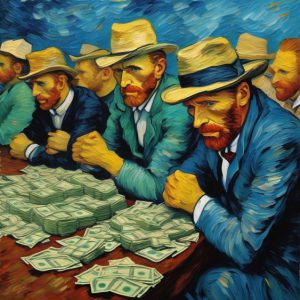
Updated August 2023
Obama vs. Trump: A Comparative Analysis of Two American Presidents
In the annals of American history, two presidents stand out for their distinctive leadership styles and the impact they left on the nation. Barack Obama and Donald Trump, both charismatic figures in their own right, have polarized the political landscape and left indelible marks on the United States. This article delves into a comprehensive comparison of these two leaders, their life journeys, political careers, policies, and the legacies they’ve crafted.
Early Life and Background
Obama
Delve into the vibrant tapestry of Barack Obama’s early life and background, and you’ll discover a narrative that unfolds like a mosaic of hope, diversity, and dedication. Born on the enchanting shores of Honolulu, Hawaii, on August 4, 1961, Obama’s unique heritage immediately sets the stage for a captivating journey.
His father, a Kenyan, and his mother, an American, united in love, bringing together two worlds, two cultures, two visions. This extraordinary fusion of backgrounds sowed the seeds of an individual who would go on to rewrite history, forever altering the course of a nation.
Imagine growing up in a place where the crystal-clear waters of the Pacific Ocean meet lush, tropical landscapes, where the vibrant cultures of East Africa and the United States merge. This was the environment that nurtured young Barack. It was a setting that inherently embodied the idea of diversity and harmony, something that would later become a cornerstone of his philosophy.
As a young man, Obama’s transformative journey continued. His experiences as a community organizer in Chicago elevated his understanding of the struggles faced by ordinary Americans. It’s here that he saw the power of collective action, the potential for change in the unity of diverse voices, and the importance of empathy and understanding.
What’s truly captivating about Obama’s early life is that it foreshadowed his destiny. His formative years, rich with diverse influences and immersed in the ideals of unity, sowed the seeds for his extraordinary commitment to social change and community service. Little did he know that these experiences were shaping a future leader who would inspire a generation.
As you explore his early life and background, remember that Barack Obama’s story is not just a tale of personal success, but a testament to the boundless potential of unity, cultural diversity, and the unwavering dedication to a greater cause. This is the foundation on which he built his legacy, one that continues to shape the world even today.
Trump
Prepare to embark on an exhilarating journey through the life of a man who would become a global phenomenon. Born into a world of wealth and ambition, Donald Trump, on June 14, 1946, in the bustling borough of Queens, New York, embarked on a life that would forever change the landscape of American politics and business.
Donald Trump’s early life, akin to a rags-to-riches story with a unique twist, was not your average American upbringing. He was born into a family of real estate magnates, where towering skyscrapers were more than just buildings; they were a testament to ambition, tenacity, and an unquenchable thirst for success. It’s in this rarefied air of privilege and power that his story takes root.
From an early age, Trump was surrounded by the hustle and bustle of New York City, a metropolis where dreams and fortunes were made. But what truly sets his early years apart is the exposure to a world of business and commerce. As a young man, he wasn’t just playing with toy trucks; he was learning the intricacies of real estate deals, construction projects, and the art of negotiation.
However, it wasn’t just business that shaped young Donald. He was also drawn to the entertainment industry, dabbling in the worlds of beauty pageants and even making cameo appearances in films. This multifaceted background would later prove pivotal in his life, as it added an element of showmanship and charisma that would define his future political career.
As we delve deeper into his early life and background, we see how the stage was meticulously set for his transition into politics. Trump’s wealth, business acumen, and charismatic presence would become the cornerstone of his bid for the highest office in the land, culminating in his historic election as the 45th President of the United States.
Donald Trump’s life story is not just a tale of success but an intriguing odyssey through the worlds of business, entertainment, and politics. As you explore his early years, remember that his journey from the heart of New York to the Oval Office is a testament to the remarkable twists and turns that can shape the destiny of a nation.
Presidential Policies and Achievements
Obama’s Policies
Embark on a journey through the annals of history, where the policy landscape was transformed by a leader whose legacy continues to reverberate through the corridors of power. Barack Obama’s presidency, often regarded as a chapter of remarkable change and innovation, was defined by a string of impactful policies that not only reshaped the nation but also left an indelible mark on the world stage.
The Affordable Care Act (Obamacare): Like the unveiling of a profound masterpiece, the Affordable Care Act, affectionately known as Obamacare, ushered in an era of healthcare reform in the United States. Imagine a nation where the promise of affordable and accessible healthcare wasn’t just a dream but a tangible reality. Under the banner of Obamacare, millions gained access to health insurance, pre-existing conditions became a thing of the past, and preventive care became a cornerstone of public health. As you explore Obama’s policies, you’ll find that this monumental legislation was more than just a reform; it was a declaration of compassion, equality, and progress.
Economic Stimulus Packages: In the throes of a financial crisis that sent shockwaves around the globe, Barack Obama’s leadership shone brightly. His economic stimulus packages breathed life into a struggling economy. Picture a nation burdened by recession, where jobs were scarce, and hope even scarcer. With a calculated vision, Obama’s policies injected a new lease on life into businesses, infrastructure, and innovation. It wasn’t just an economic recovery; it was a testament to resilience, adaptability, and the unwavering commitment to the American dream.
The Assassination of Osama bin Laden: The pursuit of justice reached its pinnacle on May 2, 2011, when the world stood still as the news broke. Osama bin Laden, the mastermind behind the 9/11 terror attacks, had been located and eliminated. The daring operation that culminated in his assassination demonstrated unwavering resolve in the face of global terrorism. In Obama’s policy portfolio, this event represents not only a triumphant moment in national security but a symbol of determination and the relentless quest for a safer world.
As you delve deeper into the realm of Obama’s policies, you’ll uncover not just a list of accomplishments but a narrative of transformation. It’s a journey through the intricacies of healthcare reform, economic resurgence, and international security. These policies aren’t just ink on paper; they are the embodiment of a vision for a better, more inclusive future. Explore further and witness how these policies continue to shape the nation and inspire the leaders of tomorrow.
Trump’s Policies
Step into the whirlwind of change that was the Trump era, where traditional norms were challenged and the political landscape was shaken to its core. Donald Trump, the 45th President of the United States, was a man of action, and his policies reflected a dynamic, often polarizing, approach to governance.
Tax Cuts: If there’s one phrase that resonates with the Trump presidency, it’s “tax cuts.” Imagine a world where the weight of taxes was lifted from the shoulders of businesses and individuals. Trump’s policies ushered in a sweeping tax reform that aimed to boost economic growth and put more money in the pockets of the American people. The result? A surge in job creation, corporate investment, and a revitalized economy that made the nation’s financial heartbeat quicken. These weren’t just tax cuts; they were a testament to the belief that prosperity should be accessible to all.
Deregulation: In the realm of government oversight, Trump’s policies reflected a profound belief in less red tape. Picture a world where businesses could breathe and innovate without being bogged down by layers of regulations. His approach to deregulation was a call to unshackle the forces of entrepreneurship and economic growth. The result was a renewed sense of dynamism in industries ranging from energy to finance, empowering individuals and corporations to reach new heights.
Immigration Reforms: The topic of immigration was a lightning rod during Trump’s presidency. His policies sought to address border security and transform the immigration system. Visualize a nation where the intricacies of immigration were redefined. His approach aimed to strike a balance between protecting national interests and offering opportunities for those seeking a better life in the United States. These were not just policies; they were part of a passionate debate about the soul and future of the nation.
Trade Policies: Trump’s approach to trade, often breaking from traditional Republican doctrine, was a captivating twist in the story. He pursued aggressive negotiations and tariff actions, upending longstanding trade agreements and seeking to put America first. It was a strategy that sparked international discussions and redefined the nation’s stance on global commerce.
As you delve deeper into Trump’s policies, you’ll find a narrative of bold decisions, fierce debates, and a reimagining of the American political landscape. These policies weren’t just bullet points on an agenda; they were the embodiment of a vision for a different kind of governance, one that spurred economic growth, challenged norms, and left an indelible mark on the nation’s history. Explore further to understand how these policies continue to shape the political discourse and the future of the United States.
Foreign Policy and International Relations
Obama’s Approach
Barack Obama’s approach to international relations marked a significant departure from the policies of his predecessor, emphasizing diplomacy, multilateralism, and a commitment to addressing global challenges collectively. His tenure was defined by a resolute dedication to cooperation, a stark contrast to the unilateralism of previous years.
One of the most prominent diplomatic achievements of Obama’s administration was the Iran Nuclear Deal, officially known as the Joint Comprehensive Plan of Action (JCPOA). This landmark agreement, negotiated in 2015, aimed to curtail Iran’s nuclear program in exchange for sanctions relief. It was a testament to Obama’s belief in the power of diplomacy to prevent the proliferation of nuclear weapons. The deal garnered support from a coalition of world powers, underscoring the significance of a united front in addressing a critical global issue.
The Paris Agreement, another cornerstone of Obama’s international approach, was a landmark accord that sought to combat climate change on a global scale. By bringing nearly 200 nations together to commit to reducing greenhouse gas emissions, the agreement signaled a collective commitment to protecting the planet. Obama’s involvement in this initiative was a testament to his belief in the importance of multilateral efforts to address pressing global issues.
His approach to international relations extended beyond specific agreements. Obama’s rhetoric and actions conveyed a message of respect for international institutions, alliances, and norms. He understood the necessity of working together with other nations to tackle complex challenges like terrorism, nuclear proliferation, and climate change.
In the ever-evolving landscape of global affairs, Obama’s approach remains a beacon of diplomacy and cooperation. His legacy underscores the potential for multilateral efforts to address the most pressing issues of our time. It serves as a reminder that, in a world interconnected as never before, the pursuit of common goals through diplomacy and collaboration is not just a choice but a necessity for a better future.
Trump’s Approach
The Trump administration, under the helm of Donald Trump, heralded a seismic shift in the United States’ approach to international relations. Unlike his predecessor, Trump’s stance was characterized by unilateralism, renegotiating international agreements, and redefining the nation’s role in various global accords. His approach was as controversial as it was transformative, reimagining the United States’ place on the world stage.
One of the most significant moves during his presidency was the renegotiation of the North American Free Trade Agreement (NAFTA), resulting in the United States-Mexico-Canada Agreement (USMCA). This trade deal aimed to address perceived shortcomings in NAFTA, focusing on provisions related to labor, intellectual property, and environmental standards. It reflected Trump’s commitment to reshaping international agreements to better serve American interests.
The decision to withdraw from the Paris Agreement, a landmark international accord aimed at combating climate change, sent shockwaves across the globe. It signified a fundamental shift in the U.S.’s stance on environmental issues, and the decision was met with mixed reactions, both domestically and abroad. Trump’s withdrawal underscored his belief in prioritizing domestic concerns over global commitments.
Additionally, his administration took a more confrontational approach to international institutions and alliances, often challenging the status quo. Whether it was questioning the relevance of NATO, demanding more significant financial contributions from allies, or imposing tariffs on trading partners, Trump’s policies were rooted in a vision of protecting American interests first.
His approach to international relations was seen by some as a departure from diplomatic norms, while others applauded his dedication to putting American interests above all else. Regardless of the opinion, Trump’s presidency marked a significant shift in the United States’ role on the global stage, one that continues to be debated and analyzed in the ever-evolving landscape of international relations.
Economic Policies and Impact
Obama’s Economic Legacy
The Obama era, marked by an economic landscape scarred by the global financial crisis, stands as a testament to the resilience of leadership and the enduring spirit of economic recovery and growth. During his tenure, the administration undertook a series of bold and strategic actions that not only salvaged the nation from the brink of financial collapse but also paved the way for renewed economic vitality.
The impact of the global financial crisis, a cataclysmic event that reverberated across the world, could not be underestimated. The situation was dire, with businesses faltering, unemployment soaring, and homes lost. In this tumultuous backdrop, the Obama administration took the reins, determined to stabilize the economy and chart a course toward prosperity.
One of the most significant achievements was the passage of the American Recovery and Reinvestment Act, an ambitious stimulus package aimed at injecting life into the stagnant economy. It was a sweeping effort that allocated resources to crucial areas such as infrastructure, renewable energy, and healthcare, creating jobs and spurring economic activity.
Additionally, the administration’s support for the automotive industry played a pivotal role in salvaging jobs and preventing the collapse of iconic American automakers. The rescue plan was a strategic move that not only protected livelihoods but ensured the continued vibrancy of a critical sector.
These actions, combined with prudent monetary policy and a commitment to financial sector stability, helped steer the nation through tumultuous waters. It wasn’t just about recovery; it was about the reinvigoration of the American dream.
While challenges persisted, including persistent income inequality, Obama’s economic legacy was a narrative of resilience, renewal, and the pursuit of economic justice. The policies enacted during his presidency weren’t just reactions to a crisis; they were a roadmap to a more stable and prosperous future. In the ever-evolving economic saga of the United States, Obama’s legacy remains an enduring chapter of hope and progress, where leadership played a crucial role in rekindling the nation’s economic spirit.
Trump’s Economic Legacy
The Trump administration, like a conductor orchestrating a symphony, left an indelible mark on the nation’s economic landscape. Trump’s economic policies, celebrated for their boldness and criticized for their divergence from the norm, redefined the parameters of economic prosperity. The result was a pre-pandemic economy characterized by robust employment, record stock market gains, and a renewed sense of economic vitality.
Among the pillars of Trump’s economic legacy were the historic tax cuts. The Tax Cuts and Jobs Act of 2017 was a sweeping reform that aimed to stimulate economic growth by reducing corporate and individual tax rates. This bold move was intended to bolster businesses, incentivize job creation, and, in theory, benefit American workers by putting more money in their pockets. The impact was immediate, with businesses reporting increased investments and expansions.
Deregulation was another hallmark of Trump’s economic vision. By slashing regulations across various industries, his administration aimed to unburden businesses from what they deemed excessive government oversight. The result was a renewed sense of dynamism, particularly in sectors like energy and finance, where regulations were streamlined to encourage growth and innovation.
Perhaps the most visible symbol of his economic legacy was the stock market. During his tenure, the stock market witnessed remarkable gains, reaching historic highs. The surge in market performance was a testament to investor confidence and the impact of tax cuts and deregulation.
Despite the accolades, Trump’s economic policies were not without critics. Income inequality persisted, and concerns arose regarding the long-term fiscal impact of the tax cuts. However, his approach to economics, often characterized as unconventional, left a significant imprint on the economic landscape.
In the complex tapestry of American economic history, Trump’s legacy stands as a dynamic chapter, marked by bold policies that sparked economic growth and controversy. The pre-pandemic era was, in many ways, a testament to his vision of economic prosperity, and it remains a subject of debate and discussion in the evolving narrative of American economics.
Healthcare and Social Policies
Obamacare vs. Trumpcare
In the realm of healthcare policy, a clash of ideologies unfolded, personified by two landmark initiatives: the Affordable Care Act, commonly known as Obamacare, and President Trump’s efforts to replace it with what was colloquially referred to as “Trumpcare.”
Obamacare: Enacted during Barack Obama’s presidency, the Affordable Care Act was a monumental step toward achieving universal healthcare coverage. It aimed to increase access to healthcare by expanding Medicaid, creating health insurance marketplaces, and implementing essential consumer protections. Under Obamacare, individuals with pre-existing conditions could no longer be denied coverage, and young adults could stay on their parents’ insurance plans until the age of 26.
This comprehensive reform addressed the long-standing issue of millions of uninsured Americans, allowing them to access essential healthcare services. While Obamacare was not without controversy and challenges, it represented a milestone in the pursuit of affordable and accessible healthcare for all.
Trumpcare: In stark contrast, President Trump and his administration sought to dismantle the Affordable Care Act, advocating for a series of policy changes that critics dubbed “Trumpcare.” The proposed changes included eliminating the individual mandate, which required individuals to have health insurance or pay a penalty, and offering states more flexibility in managing their healthcare programs.
The core objective of Trumpcare was to reduce the federal government’s role in healthcare, emphasizing a free-market approach. Proponents argued that deregulation and more state control would lower costs and increase consumer choice. However, critics raised concerns about the potential consequences, including the possibility of reduced coverage for vulnerable populations.
The battle between Obamacare and Trumpcare represented a fundamental division in healthcare policy. It underscored the enduring tension between a government-driven approach to healthcare and a more market-oriented one, leaving an indelible mark on the nation’s healthcare landscape and continuing to be a subject of political and policy debate.
Social Initiatives
Amidst the whirlwind of political battles and policy debates, two American leaders, Barack Obama and Donald Trump, embarked on their unique paths to address pressing social issues that shaped the nation’s conscience and character. While their approaches and priorities diverged significantly, they each made their mark on the social fabric of the United States.
Obama’s Advocacy for Marriage Equality: One of the most defining social initiatives during Obama’s presidency was his unwavering support for marriage equality. In a groundbreaking moment, he publicly endorsed the right of same-sex couples to marry, signaling a monumental shift in the nation’s stance on LGBTQ+ rights. His administration worked tirelessly to dismantle the Defense of Marriage Act (DOMA), paving the way for federal recognition of same-sex marriages and championing the cause of equality for all.
The ripple effect of Obama’s advocacy for marriage equality was profound. It wasn’t merely a political stance; it was a statement of human rights and equality. The Supreme Court’s historic decision in Obergefell v. Hodges, which legalized same-sex marriage nationwide, bore the fingerprints of Obama’s advocacy, transforming the lives of countless Americans and affirming the principles of love and equality.
Trump’s Emphasis on Immigration Reforms and Border Security: In contrast, Donald Trump’s social initiatives revolved around immigration reforms and border security. His administration sought to overhaul the immigration system by implementing stricter policies, including travel bans, the termination of the Deferred Action for Childhood Arrivals (DACA) program, and increased border security measures.
Trump’s approach was rooted in the belief that stronger border security was necessary to protect American jobs and national security. The “America First” mantra echoed through his immigration policies, which emphasized enforcing immigration laws and reducing illegal border crossings.
The polarizing nature of Trump’s immigration policies ignited passionate debates about the treatment of immigrants, border security, and the values that underpinned American identity. It was a stark contrast to the inclusive and equalitarian approach of his predecessor, generating profound conversations about the nation’s immigration policy and the treatment of undocumented immigrants.
In the dynamic landscape of American social initiatives, the divergent paths taken by Obama and Trump underscore the nation’s evolving values and priorities. They demonstrated that, in the realm of social change, leadership can have a profound and lasting impact on the lives of citizens and the collective conscience of the United States.
Environmental Policies
Obama’s Stance on Climate Change
Barack Obama emerged as a dedicated advocate for addressing one of the most pressing global challenges of our time: climate change. His presidency marked a turning point in the nation’s approach to environmental issues, as he implemented a series of policies aimed at not only acknowledging the threat of climate change but actively combatting it.
At the heart of Obama’s climate change agenda was the Clean Power Plan, a comprehensive initiative aimed at reducing greenhouse gas emissions from the power sector. This plan set ambitious targets for emissions reductions, encouraged the transition to cleaner energy sources, and sought to curb pollution from power plants. It was a monumental step forward, signaling a profound commitment to environmental sustainability.
His administration also played a pivotal role in the Paris Agreement, a landmark international accord aimed at combating climate change. Under Obama’s leadership, the United States became a key participant in this global effort, pledging to reduce its emissions and collaborate with nations worldwide to address the climate crisis. It was a significant diplomatic achievement, demonstrating the United States’ readiness to take on a leadership role in the fight against climate change.
Additionally, Obama’s stance on climate change extended to initiatives to protect natural landscapes and promote clean energy. His administration expanded national monuments and designated marine protected areas, safeguarding critical ecosystems. Investments in renewable energy, such as solar and wind, were encouraged, paving the way for a more sustainable energy future.
In the complex tapestry of environmental advocacy, Obama’s legacy stands as a chapter of resolute commitment to a sustainable future. His policies and diplomatic efforts were a testament to the belief that climate change was not just an environmental challenge but a moral and economic imperative. As the world grapples with the consequences of a changing climate, his legacy serves as a reminder that leadership and action are vital in the quest for a more sustainable and resilient world.
Trump’s Environmental Policies
The Trump administration brought a distinctive perspective to environmental policies, focusing on deregulation, energy independence, and recalibrating the nation’s role in international climate agreements. These policies, while applauded by some as promoting economic growth, were criticized by environmental advocates as detrimental to the planet’s health.
One of the most notable actions during Trump’s presidency was the rollback of several environmental regulations, encompassing areas such as emissions standards for automobiles and power plants. The administration argued that these regulations stifled economic growth and hindered domestic industries. While these actions were seen as providing regulatory relief, they generated concerns about air and water quality and the long-term consequences of relaxed environmental standards.
Perhaps the most controversial move was the withdrawal from the Paris Agreement. This landmark international accord aimed at combating climate change by uniting nations to reduce greenhouse gas emissions. Trump’s decision was a striking departure from the previous administration’s stance, emphasizing sovereignty and economic considerations. The withdrawal was met with international disappointment and marked a significant shift in the United States’ approach to global environmental challenges.
Simultaneously, Trump’s administration promoted domestic energy production, including the expansion of fossil fuels and the reduction of regulations impacting the energy sector. The administration aimed to achieve energy independence and create jobs, but these policies sparked debates about the long-term environmental impact and the potential consequences for renewable energy growth.
In the intricate tapestry of environmental policies, Trump’s legacy is characterized by a more industry-friendly approach, with a focus on economic growth and energy independence. His actions and decisions continue to be scrutinized and debated, reflecting the ongoing tension between environmental protection and economic interests in the United States.
Leadership Style Obama vs Trump
Obama’s Leadership
Barack Obama’s leadership left an indelible mark on the pages of American history, a legacy built on calm, measured guidance, and a resolute commitment to unity and collaboration. His leadership style wasn’t just about politics; it was about the art of bringing a divided nation together.
From the moment he took office, it was clear that Obama was a different kind of leader. His eloquent speeches weren’t just words; they were bridges of understanding that spanned the gaps of political division. He had an innate ability to convey complex ideas in a way that resonated with Americans across the spectrum. It was this gift that enabled him to set a tone of inclusivity, even when faced with the most contentious issues.
One of his most celebrated qualities was his unyielding commitment to unity. In a time when political polarization seemed insurmountable, Obama chose to rise above it. He extended an open hand to his political opponents, seeking common ground rather than entrenched divisions. It was an approach that, at times, led to criticism from those who deemed it too conciliatory, but it was an unwavering testament to his belief in the American spirit’s capacity for cooperation.
Collaboration was the cornerstone of Obama’s leadership. He surrounded himself with a diverse team of advisors, valuing differing viewpoints and expertise. His administration was a testament to the power of diverse perspectives, where debates weren’t stifled but encouraged as a means to find the best solutions for the nation’s challenges.
Through healthcare reform, economic revitalization, and international diplomacy, Obama’s leadership style set a new precedent. He demonstrated that leadership wasn’t about being the loudest voice in the room; it was about being the most thoughtful one. It was about fostering an environment where ideas could be shared, debated, and refined to create policies that truly served the American people.
In the ever-evolving tapestry of American leadership, Barack Obama’s legacy shines as a beacon of hope, unity, and collaboration. His leadership was a testament to the idea that in the face of division, a leader could still find common ground and move a nation forward.
Trump’s Leadership
The realm of American politics witnessed an extraordinary shift when Donald Trump took the reins of leadership. His style was distinctive, often described as confrontational and unapologetic, igniting a fervent connection with his base that set him apart from his predecessors.
One of the most defining aspects of Trump’s leadership was his mastery of social media. With a single tweet, he could capture the nation’s attention, setting the agenda for media coverage and public discourse. His unfiltered and unconventional use of platforms like Twitter allowed him to bypass traditional communication channels, speaking directly to his supporters, and at times, launching verbal salvos at his opponents. In a digital age where communication was instant and unfiltered, Trump was a pioneer, shaping the political landscape with every 280-character missive.
Rallies, another hallmark of Trump’s leadership, became electrifying spectacles where his base gathered en masse. His rallies were not just political events; they were a testament to his unique ability to connect with people. He spoke their language, addressing their concerns, and stoking their enthusiasm. For his supporters, these gatherings weren’t just about politics; they were a shared experience, a sense of belonging, and a manifestation of the Trump movement.
While his leadership approach was often deemed confrontational, it resonated deeply with a significant portion of the American electorate. He was seen as a disruptor, challenging the status quo and vowing to put America first in areas like trade and immigration. His unapologetic stance on these issues was a rallying cry for those who felt their concerns had been ignored by traditional politicians.
In the complex tapestry of American leadership, Donald Trump’s tenure stands as a chapter that defied convention. His leadership style, marked by social media prowess and electrifying rallies, polarized the nation and reshaped the discourse. Whether celebrated or criticized, his impact on the political landscape was undeniable, leaving an enduring mark on American politics and the way leaders connect with their base.
Political Careers
Obama’s Rise to Power
Barack Obama’s political journey began as an Illinois state senator before he entered the national stage as a charismatic orator and unifying figure. In 2008, he made history by becoming the first African-American President of the United States.
Trump’s Path to the Presidency
Donald Trump, on the other hand, had never held public office before his presidential bid. He gained recognition as a real estate mogul and reality TV star. In 2016, he clinched the presidency as the Republican nominee.
Public Perception
Obama’s Approval Ratings
Dive into the enigmatic realm of American politics, where the ebb and flow of public opinion converged around one captivating figure: Barack Obama. His approval ratings, akin to a political barometer, measured the pulse of a nation captivated by his charisma, eloquence, and unwavering connection to the American people.
Obama’s Approval Ratings: Imagine a presidency that defied the conventional ups and downs of political popularity. Barack Obama’s tenure in the White House was an astonishing tapestry of high approval ratings, a testament to his unique ability to resonate with a diverse populace. His eloquence, a gift as rare as it was magnetic, wasn’t just about words but the way he could ignite the American spirit with his compelling narratives.
It was his capacity to bridge the gap between the complex world of politics and the everyday lives of citizens that truly set him apart. He didn’t just speak; he listened and empathized. Whether discussing healthcare reform, economic revitalization, or foreign policy, Obama had the remarkable ability to transform complex issues into relatable, actionable goals that the American people could embrace.
And it wasn’t just his words that swayed public opinion. It was the historic moments he shepherded, from the passage of the Affordable Care Act to the mission that culminated in the death of Osama bin Laden. Each achievement was not just a political win but a victory for the American people, a testament to the progress that could be made when a nation believed in its leader.
As you delve deeper into the realm of Obama’s approval ratings, you’ll discover a story of a leader who navigated the intricate waters of public opinion with grace and unwavering authenticity. His journey reflects the enduring power of leadership that can inspire and unite, transcending political divisions to embrace the aspirations of a diverse nation. Explore further to unveil the nuances of this captivating narrative, one that continues to echo in the corridors of power and the hearts of the American people.
Trump’s Popularity
Embark on a roller-coaster ride through the turbulent landscape of American politics, where approval ratings for Donald Trump, the 45th President of the United States, took on a life of their own. His journey was marked by fluctuations in popularity that mirrored his polarizing presence and the policies that stirred the pot of public opinion.
Trump’s Popularity: Imagine a presidency that was anything but predictable, where approval ratings soared to remarkable heights and plunged to bewildering lows. Donald Trump was the disruptor-in-chief, a figure whose every move, every tweet, seemed to ignite a firestorm of debate and dissent. His popularity, or lack thereof, was a reflection of his ability to simultaneously captivate and confound the American people.
In the realm of politics, Trump was a maverick. His unfiltered communication style, delivered through the immediacy of social media, was a double-edged sword. It could rally supporters with a single tweet or send shockwaves through the nation. The result was a public approval rating roller-coaster that left political pundits and citizens alike on the edge of their seats.
His policies, whether on immigration, trade, or foreign relations, had the power to galvanize his base and ignite fierce opposition. His tenure in office saw a dynamic approach to governance, one that seemed to revel in disruption, leading to both fervent support and vocal opposition.
As you dive deeper into the realm of Trump’s popularity, you’ll uncover a narrative of a leader who defied political conventions and reshaped the landscape of American politics. His journey was far from ordinary; it was marked by polarized opinions and a constant tension between his base and those who vehemently disagreed with his policies and actions. Explore further to unravel the complexities of this captivating story, one that continues to influence the nation’s political discourse.
Conclusion
In the grand saga of American politics, Barack Obama and Donald Trump have played pivotal roles, each leaving behind a unique legacy. Obama’s emphasis on diplomacy, social change, and healthcare reform contrasts with Trump’s focus on economic policies, deregulation, and immigration reform. The impact of these two presidents on the United States will continue to be a subject of debate and analysis for years to come.
FAQs
- How did Barack Obama’s early life influence his presidency?
- What were the key foreign policy differences between Obama and Trump?
- Which economic policies were associated with Donald Trump’s presidency?
- How did healthcare policies differ between the two presidents?
- What were the main factors that contributed to the fluctuating approval ratings of Donald Trump?
This content was originally published on Feb 20, 2017, but it has been continuously updated over the years, with the latest update conducted in August 2023.
Other articles of interest

What is the affect heuristic meaning in decision-making?

Aehr Stock Price: Should You Dive In or Exit Quickly?

How to invest in BRICS currency?

What are the top picks for 2025 dogs of the DOW strategy?

Metacognition Definition

Oil to Gold Ratio: How to Leverage It for Profitable Investments

Cash on the Sidelines: Powering the Market Surge or Purge?

Define Indoctrination: The Art of Subtle Brainwashing and Conditioning

AI Threat to Humanity: Reality Check or Pure Fiction

Ray Dalio all weather portfolio PDF

What is Financial Stress? A Hidden Goldmine for Investors

Normalcy bias is the denial of danger in favor of the desire for safety

Michael Burry mother of all crashes

The madness of crowds summary



